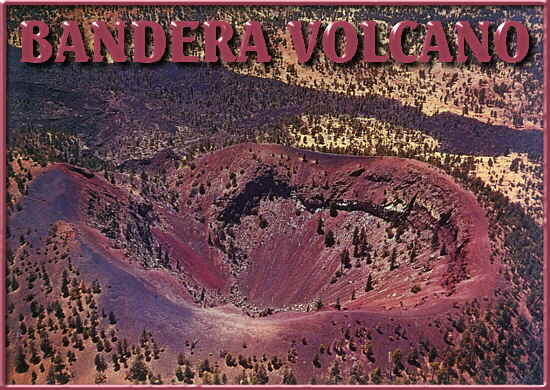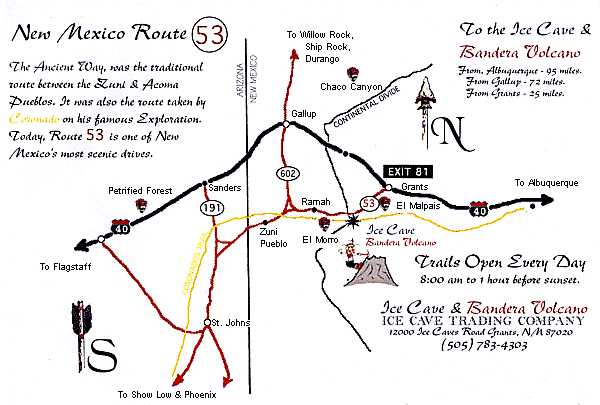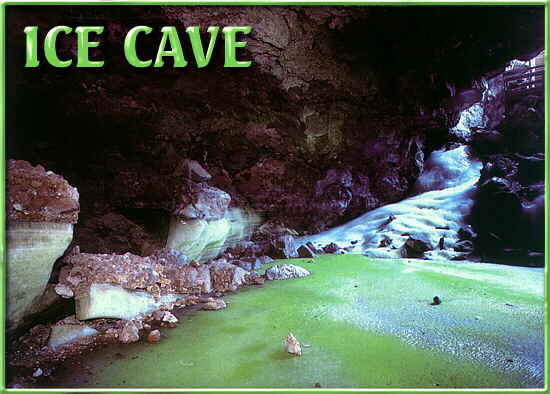
Bandera Volcano
Bandera Crater is the largest volcano in the region. It erupted around 10,000 years ago. There were two stages of the eruption: first the cinder cone developed, then a massive lava flow broke out on its side. The molten lava reached temperatures above 2,000 degrees Fahrenheit. Bandera's lava flow is nearly 23 miles long.
At the end of the Bandera eruption, the lava suddenly fell back down the main vent making the bottom of the cone deeper than the outside lava flow. The crater that remains is nearly 1200 feet wide at the top and roughly 750 feet deep. Over time, erosion and gravity take their toll on the crater and slowly fill it with cinders and rocks.
Lava Tubes
The Bandera lava tube complex at one time extended for over seventeen miles. Today, much of the tube is collapsed, but many segments of these spectacular caves remain to be seen.
The Bandera lava tubes formed during the phase of molten lava flow from the volcano. The surface of the lava hardened, while below, the lava continued to flow. The hardened, porous lava acted as an excellent insulator and kept the lava beneath the surface hot and runny. The insulated lava so flowed through natural pipelines appropriately known as lava tubes. When the flow from Bandera came to an end, the lava tubes drained and left caves that we can explore today.
| ![]()
![]()



